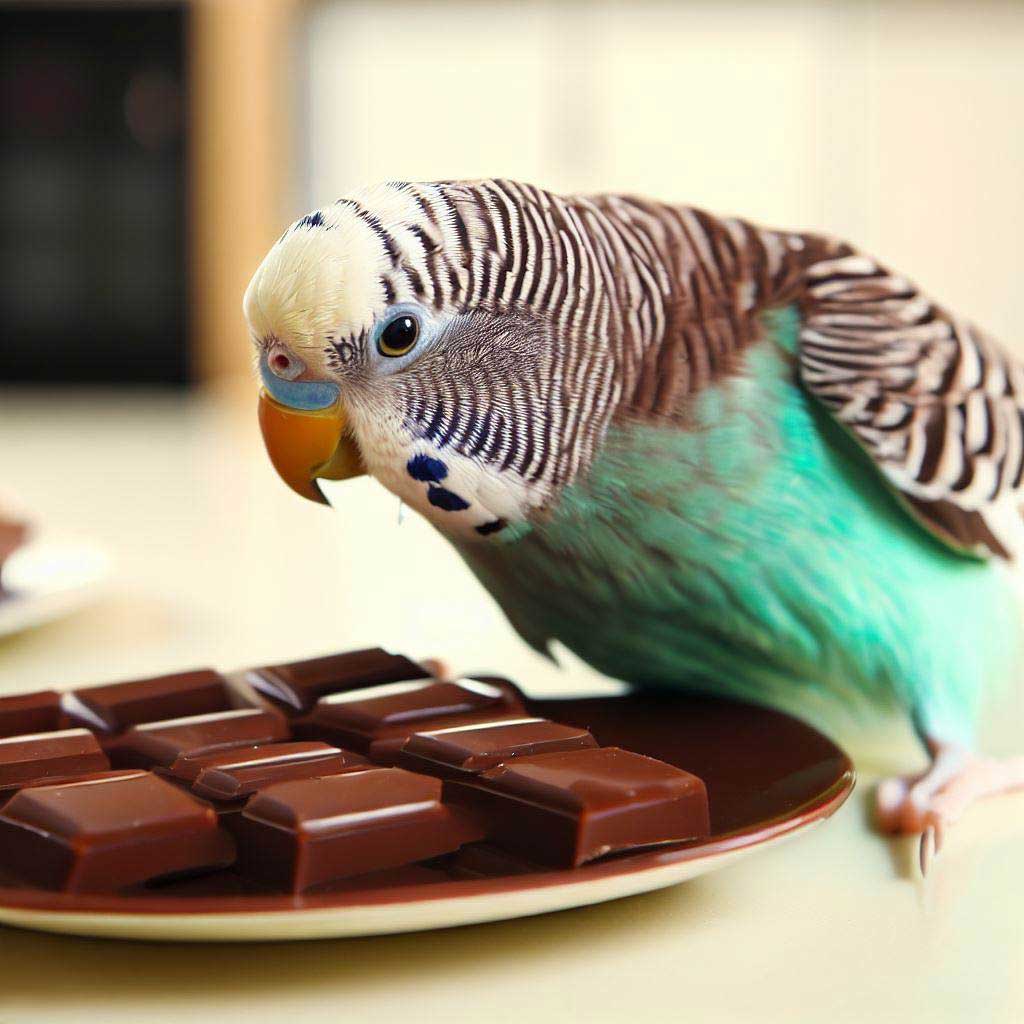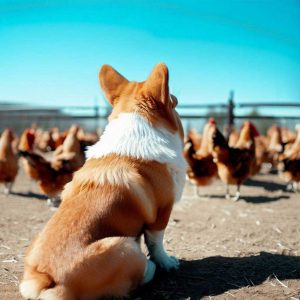Can Birds Eat Chocolate?
It’s a query that has intrigued many bird enthusiasts and pet owners. When we dive into the complex world of avian diets, the question stands out, urging us to understand more about our feathered friends’ dietary nuances.
Table of Contents
Introduction
Brief on birds and their dietary habits.
Birds, nature’s avian wonders, possess a dietary range as diverse as their vibrant plumage. From the nectar-loving hummingbird to the predatory hawk, their diets are as varied as their species. While a sparrow might delight in grains, a parrot might find joy in fruits. The intricacy of their dietary preferences mirrors their unique metabolism and digestive systems, which operate differently than our own.
It’s not uncommon to find a curious bird pecking at what it finds, but that doesn’t mean everything is suitable for consumption. Just as certain foods are cautioned against in feline and canine diets, birds too have their list of dietary dangers. This brings us to an essential question: can birds eat chocolate?
Importance of understanding what birds can and cannot eat.
You might think, “It’s just a small piece of chocolate; what harm can it do?” But therein lies the danger. A substance delightful to us can be deadly to them.
As caretakers, enthusiasts, or even casual bird watchers, understanding what’s safe and what’s lethal for birds is our responsibility. It isn’t just about ensuring they get the right nutrients, but also about protecting them from potential threats.
Birds, despite their capacity for flight and seemingly robust nature, can be fragile when it comes to their dietary needs. And yes, if you’re pondering if chocolate falls into the ‘harmful’ category, the nuances of its impact might surprise you.
Chocolate’s omnipresence in our lives makes it an easily accessible treat, but before you consider sharing that joy with your avian buddy, it’s vital to delve into its effects on them. The line between a harmless treat and a dangerous indulgence for birds can often be thin, but its implications are profound.
As we navigate through the subsequent sections, we will delve deeper into the enigma surrounding birds and chocolates. This knowledge is not just pivotal for bird owners but for anyone who appreciates the sheer beauty and complexity of the bird kingdom. After all, safeguarding these creatures and understanding their needs is a testament to our shared coexistence on this planet.
What is the Composition of Chocolate?
When you bite into a piece of chocolate, do you ever pause to consider its ingredients? If you’ve ever asked, “Can birds eat chocolate?”, then diving into the very essence of what makes up this delightful treat becomes crucial.
What is chocolate made of?
At its core, chocolate originates from the cacao tree, specifically the beans of its fruit. These beans undergo various processes, transforming from bitter seeds to the rich, melty goodness we savor. Primary ingredients include cacao solids, cocoa butter, and sugar.
However, it’s a compound called theobromine, present in cacao, that is central to our discussion about whether birds can ingest chocolate safely. While humans metabolize theobromine without a hitch, for our avian friends, this compound can pose serious health risks.
Different types of chocolate: dark, milk, white.
The market is flooded with an array of chocolates, each catering to distinct taste profiles. But beyond taste, the variance in their composition can influence how harmful they might be to birds.
- Dark Chocolate: Renowned for its potent flavor, dark chocolate boasts the highest concentration of cacao solids. This means it contains the most theobromine, making it the most dangerous type when considering the question, “Can birds eat chocolate?”
- Milk Chocolate: As the name suggests, milk chocolate contains added milk solids. While it still has theobromine, its concentration is less compared to dark chocolate due to the dilution from milk. Yet, it’s still harmful to birds.
- White Chocolate: A misnomer of sorts, white chocolate lacks cacao solids. It’s primarily made of cocoa butter, sugar, and milk solids. Theobromine levels are the lowest here, but it’s crucial not to mistake this as a sign that it’s safe for birds. Even minor amounts of theobromine can be detrimental.
While the allure of chocolate captivates many of us, it’s vital to recognize its potential hazards, especially when it comes to our feathered companions. Can birds eat chocolate? No, advocating for keeping any form of chocolate, be it dark, milk, or white, far away from their reach.
The Dangers of Theobromine for Birds
Chocolate’s velvety texture and rich flavor might be irresistible to us, but it’s imperative to understand the key component that makes it perilous for our feathered friends: theobromine.
Theobromine: a primary ingredient in chocolate.
Originating from the Greek words “theo” (god) and “broma” (food), theobromine is sometimes referred to as “food of the gods”.
Found predominantly in cacao beans, it’s a bitter alkaloid that contributes to the unique taste of chocolate. In the realm of chemistry, theobromine belongs to the methylxanthine class, a group which also includes caffeine and theophylline.
While humans possess the enzymes to break down and excrete theobromine effectively, the same cannot be said for many animals, including birds.
It’s this compound, alongside other ingredients, that lends chocolate its stimulating properties. You might enjoy a piece of dark chocolate for that slight boost in alertness or mood elevation. However, the stimulating effects you experience are a mere shadow of the hyperactivity and potential dangers theobromine poses to birds.
Why theobromine is toxic to birds.
Let’s dive deeper into the intricacies of bird physiology. Unlike humans, birds have a faster metabolic rate but lack the specific enzymes necessary to break down and detoxify theobromine. When a bird ingests chocolate, the theobromine circulates within its system for a prolonged period, leading to theobromine poisoning.
So, how does this manifest? Initially, symptoms might seem mild. Birds may showcase increased thirst or even a slight upturn in energy. But don’t let this fool you. As the theobromine concentration escalates, things turn sinister. The bird can experience digestive issues, rapid heart rate, tremors, seizures, and in extreme cases, cardiac arrest.
Another factor amplifying the dangers is a bird’s respiratory system. Exceptionally efficient, their air sacs allow for a near-continuous flow of air through the lungs. This means toxic substances, like theobromine, are rapidly absorbed, giving caregivers minimal reaction time to counteract the effects.
The level of toxicity also depends on the amount of chocolate consumed and its theobromine content. Remember, darker chocolates contain higher concentrations, making even tiny amounts perilous.
It’s not just about avoiding an obvious chunk of chocolate; it’s about being vigilant with anything that might contain cacao derivatives. Because for our avian friends, the blissful indulgence we find in chocolate can quickly transform into a fatal encounter.
What is the Immediate Effects of Chocolate on Birds?
Common signs and symptoms of chocolate ingestion.
While birds might not display symptoms instantaneously upon chocolate consumption, signs can manifest within hours. These indicators can range from mild to severe and are pivotal for a bird owner to identify swiftly:
- Hyperactivity: Initially, a bird might seem unusually active. This hyperactive state is due to the stimulant properties of theobromine and caffeine present in chocolate.
- Increased Thirst and Urination: Theobromine acts as a diuretic, causing birds to drink more water and subsequently urinate more frequently.
- Digestive Disturbances: Birds might suffer from diarrhea or vomiting, revealing signs of an upset stomach.
- Rapid or Irregular Heartbeat: This can be a consequence of theobromine’s stimulation of the heart muscle.
- Respiratory Distress: You may notice labored breathing or panting, indicating the bird’s respiratory system is under duress.
- Seizures or Tremors: In more severe cases, the bird might experience muscular tremors or full-blown seizures.
- Weakness or Collapse: A bird might exhibit signs of lethargy, weakness, or even collapse as the toxins work their way through the system.
The impact on the bird’s metabolism and nervous system.
Birds, with their swift metabolic rates, process substances differently from humans. When chocolate, laden with theobromine and caffeine, enters their system, it sets off a chain of metabolic disruptions.
- Metabolic Rate: A bird’s naturally high metabolic rate means it absorbs theobromine quickly. While this rapid absorption might benefit when deriving energy from food, with toxins like theobromine, it translates to swift onset of toxic symptoms.
- Nervous System Stimulation: Theobromine and caffeine are central nervous system stimulants. In birds, this overstimulation can lead to hyperactivity, tremors, and even seizures. It’s akin to overloading an electrical circuit, where the bird’s nervous system becomes overwhelmed, leading to erratic behavior and potential neural damage.
- Cardiac Impact: Apart from the nervous system, the bird’s cardiovascular system also bears the brunt. The heart might beat rapidly or irregularly, causing undue stress on this vital organ and increasing the risk of heart failure.
Understanding these immediate impacts is crucial for anyone caring for or encountering birds.
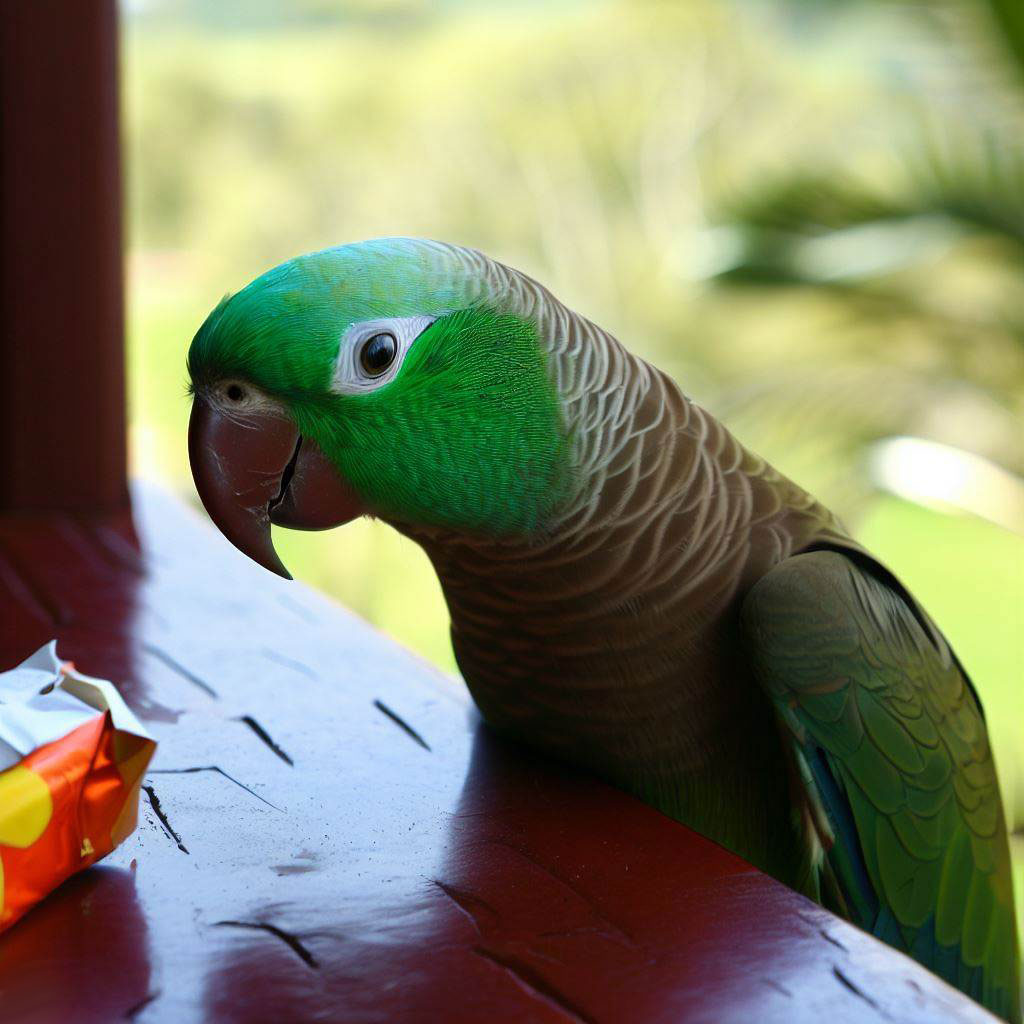
What are the Long-Term Effects of Chocolate Consumption?
The risks associated with birds ingesting chocolate go beyond just immediate symptoms. When one delves into the question, “Can birds eat chocolate?”, it’s not just about the here and now but also the prolonged repercussions. The consequences of chocolate consumption, even in minor quantities, can cascade into long-term health complications for birds.
How chocolate can impact a bird’s lifespan and quality of life.
Chocolate, specifically the theobromine within, can exert a lasting impact on a bird’s overall wellbeing:
- Diminished Lifespan: Repeated exposure or even a single large dose can reduce a bird’s lifespan. The strain chocolate places on their organ systems can lead to premature aging or vital organ failure.
- Cardiovascular Issues: Just as humans monitor their heart health, birds have cardiovascular concerns too. Regular exposure to chocolate can cause permanent damage to a bird’s heart, making them susceptible to conditions like arrhythmia or heart failure.
- Neurological Damage: The stimulatory effects of theobromine on the bird’s nervous system can result in lasting neural damage. Over time, this could manifest as chronic behavioral changes, tremors, or even seizures.
- Digestive Problems: Chronic ingestion can disrupt a bird’s digestive flora and fauna, leading to long-term digestive issues such as chronic diarrhea, malabsorption, and nutritional deficiencies.
The risk of recurring health issues.
Even if a bird seems to recover from an initial chocolate ingestion episode, the specter of health risks lingers:
- Increased Sensitivity: Birds might develop heightened sensitivity to theobromine, meaning even smaller future ingestions can lead to severe reactions.
- Liver and Kidney Strain: These organs play crucial roles in detoxifying and eliminating substances from the body. Continuous exposure to chocolate’s harmful components can strain these organs, increasing the likelihood of liver and kidney diseases.
- Compromised Immune System: Over time, the toxic burden can weaken a bird’s immune response, making them more susceptible to infections and diseases.
- Behavioral Changes: Chronic exposure might lead to alterations in a bird’s behavior, making them more irritable, less active, or showing signs of depression.
When you think about entertaining the notion, “Can birds eat chocolate?”, remember it’s not just about immediate toxicity but also the shadows it casts on a bird’s future. Vigilance and preventive measures today can spare our avian companions from a lifetime of complications tomorrow.
What to Do if Your Bird Ingests Chocolate?
The mere thought of our feathered friends coming into contact with harmful substances is nerve-wracking. Here’s a quick guide to navigate this pet emergency.
Immediate first-aid steps.
Every second counts when dealing with chocolate ingestion. Here’s what you need to do:
- Remove the Source: Ensure no more chocolate is within the bird’s reach. Secure the environment to prevent further consumption.
- Stay Calm: Birds can sense your emotions. Even though it’s a distressing situation, remain composed to keep the bird as calm as possible.
- Do Not Induce Vomiting: Unlike some other animals, inducing vomiting in birds can be harmful. It’s best to avoid any home remedies unless directed by a professional.
- Keep Bird Hydrated: Offer your bird fresh water. It will help dilute the toxin and encourage excretion.
- Monitor for Symptoms: Keep a close watch for signs like hyperactivity, irregular heartbeat, or respiratory distress.
When and how to contact a veterinarian.
Immediate professional intervention can drastically improve the prognosis:
- Call Right Away: As soon as you suspect chocolate ingestion, contact your avian vet or an emergency animal hospital. Don’t wait for symptoms to manifest.
- Describe the Situation: Let the vet know how much chocolate the bird might have consumed, the type of chocolate, and any symptoms you’ve observed. This can help the vet determine the severity of the situation.
- Follow Vet Advice: Adhere to any interim advice the vet provides while you prepare to bring the bird in.
- Transport Safely: Place your bird in a secure, quiet carrier. Avoid any loud noises or jostling during transit.
- Regular Check-ups: Even if your bird seems fine post-treatment, regular veterinary check-ups are crucial to monitor for any latent effects.
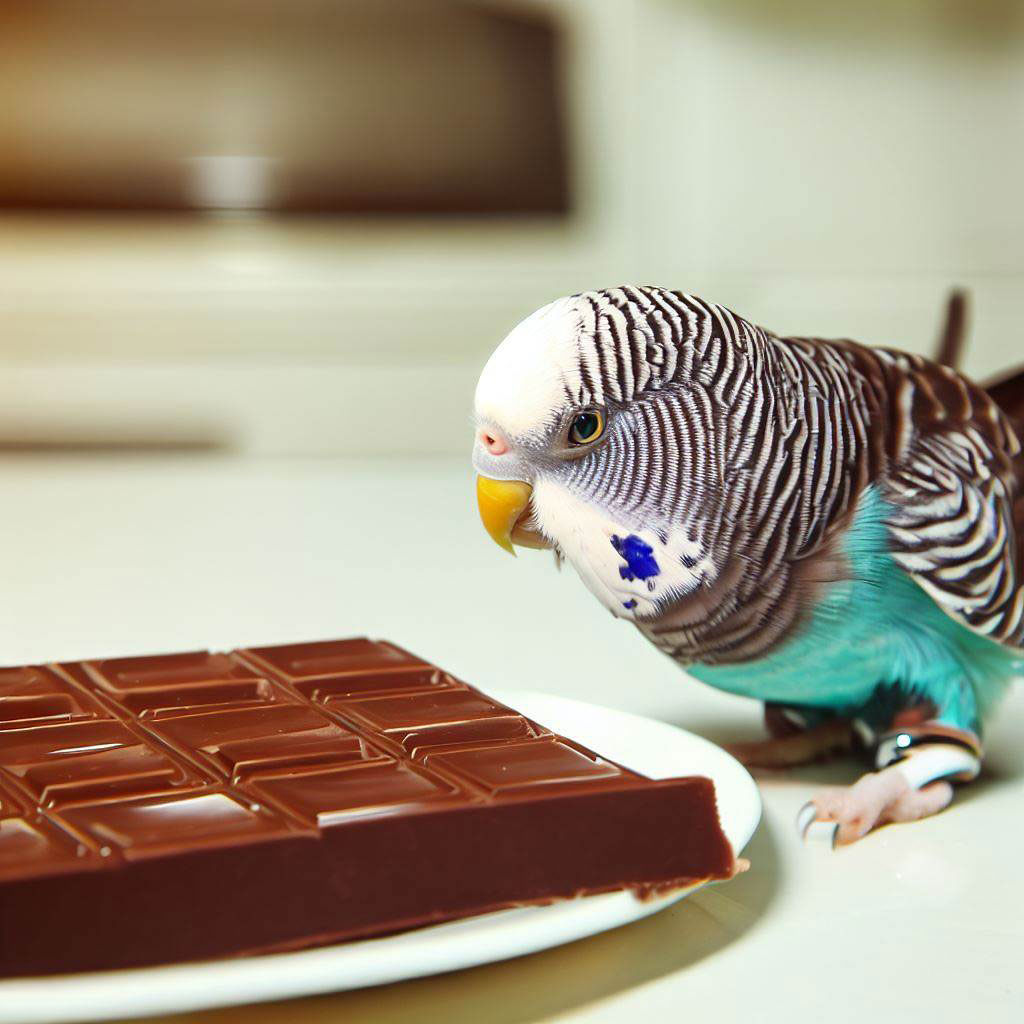
Safe Alternatives to Chocolate for Birds
A treat can strengthen your bond with your feathery friend. Consider these wholesome alternatives that are both safe and delightful for birds.
BUT, always research your specific bird breed first! Some fruits, veg, seeds etc are better suited and kinder on some species than others.
Nutritious treats for birds.
Delight your avian companion with treats they’ll relish while also receiving a nutritional boost:
- Fresh Fruit: Birds adore fresh fruits such as berries, bananas, and apples (sans seeds). Always ensure they’re washed and pesticide-free.
- Vegetables: Leafy greens, carrots, and bell peppers are a hit. They provide essential vitamins and minerals. Remember to wash them thoroughly.
- Cooked Grains: Quinoa, rice, or barley can be served in moderate amounts. They’re packed with good carbohydrates and dietary fiber.
- Nuts and Seeds: While high in fat, they can be given in moderation. Opt for unsalted varieties like almonds, sunflower seeds, and flax seeds.
- Eggs: Boiled or scrambled eggs (without salt or seasoning) offer a protein-rich treat.
How to ensure the safety of bird treats.
It’s not only about knowing the safe treats but also ensuring their quality and safety:
- Avoid Processed Foods: Stay away from sugary or salt-laden snacks, even if they’re marketed for birds. Natural, unprocessed foods are best.
- Wash Thoroughly: Clean fruits and vegetables to remove any pesticide residue. Organic options are excellent but still require cleaning.
- Limit Portions: Even with nutritious options, moderation is crucial. Overfeeding can lead to obesity or other health complications.
- Check for Allergies: Like humans, birds can have allergic reactions. Introduce one treat at a time and monitor for any adverse reactions.
- Storage: Keep treats in a cool, dry place to prevent spoilage. Regularly inspect for mold or contamination.
When it comes to spoiling your pet bird, the inquiry shouldn’t stop at “Can birds eat chocolate?”. It should be “What else can they have instead?” Dive deeper into the world of avian nutrition to discover a plethora of safe and healthful treats they can enjoy without harm.
Other Foods to Avoid for Birds
Birds, with their diverse and unique physiology, are wonderfully intriguing creatures. Like chocolate, numerous other foods can be detrimental to their health. And like we said previously, always research your specific bird breed first with all dietary questions and requirements.
A list of toxic foods.
Besides chocolate, it’s imperative to be aware of other potential hazards lurking in your kitchen. Here’s a non-exhaustive list:
- Avocado: Contains persin, a substance that can lead to respiratory distress and even fatality in birds.
- Onions & Garlic: High consumption can cause digestive upset, and in extreme cases, lead to anemia.
- Caffeine: Found in coffee, tea, and some sodas, caffeine can induce cardiac malfunction in birds.
- Alcohol: Even small amounts can be toxic, leading to potential nervous system disorders or death.
- Salt: High salt foods can lead to salt poisoning, which can manifest as excessive thirst and kidney dysfunction.
- Fruits Seeds & Pits: Some seeds, like those in apples, contain cyanogenic glycosides which can release cyanide.
- Mushrooms: Certain types can affect a bird’s organs and lead to digestive upset.
- Xylitol: This sugar substitute found in some candies and gums can lead to rapid insulin release, causing hypoglycemia.
- Dairy Products: Most birds are lactose-intolerant and can have digestive problems with dairy.
- Processed Foods: High in salt, sugar, and artificial additives, these aren’t suitable for birds.
The importance of a balanced diet for pet birds.
Just as with humans, a balanced diet is pivotal for a bird’s overall well-being. When tempted to ask, “Can birds eat chocolate?”, or offer them anything from your plate, remember:
- Nutritional Needs: Birds need a mix of proteins, vitamins, minerals, and carbohydrates. Unbalanced diets can lead to deficiencies.
- Physiological Impact: Birds have a high metabolic rate. Inadequate or toxic foods can have immediate harmful effects.
- Mental Well-being: A proper diet supports not just physical but also mental health. Birds on a balanced diet exhibit better temperament and fewer behavioral issues.
- Lifespan: A nutritionally sound diet can enhance your bird’s lifespan and reduce the risk of diseases.
- Customization: Different bird species have varying dietary requirements. It’s essential to research and tailor the diet based on the species.
Your bird’s diet isn’t just about avoiding dangers like chocolate. It’s about embracing a holistic approach that prioritizes their health, happiness, and longevity.
Conclusion: Can Birds Eat Chocolate?
Reiterating the dangers of chocolate.
The journey through understanding avian dietary requirements has been enlightening, and a key takeaway is the potential harm certain foods, like chocolate, pose to birds. To address the query, “Can birds eat chocolate?” – the answer is a resounding no. Chocolate contains theobromine, an ingredient that, while often harmless to humans, is toxic to our feathered friends. This compound adversely affects their cardiovascular and nervous systems, leading to severe complications and, in many instances, can be fatal.
Encouraging responsible bird ownership and feeding habits.
Birds, with their captivating songs and vibrant colors, are more than just pets. They’re companions, members of the family, deserving of care and respect. As bird owners, the responsibility is two-fold: not only ensuring their safety from hazardous substances but also proactively enriching their diet with nutritious foods.
When tempted to share a snack or treat, always ensure its safety. Embrace the mantra of being informed. It’s not enough to ask, “Can birds eat chocolate?”, or crisps, or crackers, but delve deeper into understanding the unique dietary requirements and constraints of avian species.
A well-fed bird is a happy, lively one. Their spirited chirps, playful antics, and in some cases, their capacity to mimic, all get enhanced when they’re on a balanced diet. By choosing to be informed, responsible bird owners, you’re ensuring a long, healthy, and jubilant life for your winged companion. Knowledge is indeed the first step to providing the best for your pet, and in this case, keeping that chocolate bar safely out of reach.
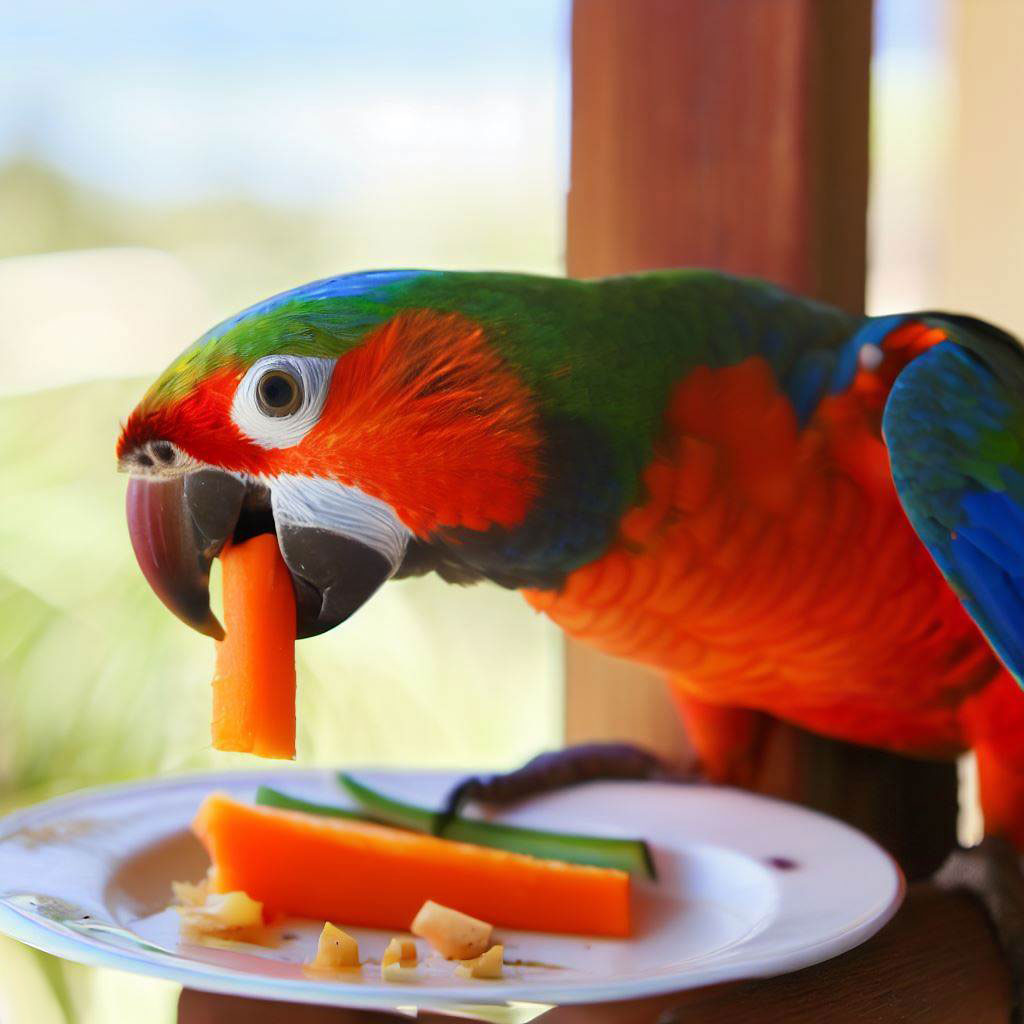
FAQ: Can Birds Eat Chocolate?
Can all birds eat chocolate?
No, chocolate is toxic to all birds due to its theobromine content.
How much chocolate is lethal to a bird?
Even small amounts can be harmful. Always keep chocolate away from birds.
How soon will symptoms appear if a bird eats chocolate?
Symptoms can appear within hours, but it’s essential to seek veterinary help immediately after ingestion.
Are certain types of chocolate more dangerous than others for birds?
Dark chocolate contains more theobromine and is more toxic than milk or white chocolate. However, all chocolate types are hazardous for birds.
My bird ate chocolate, but seems fine. What should I do?
Consult a veterinarian immediately. Some symptoms might not be immediately visible.
Are there safe chocolate alternatives for birds?
No. Birds should not consume any form of chocolate or its alternatives.
Why is theobromine toxic to birds but not humans?
Birds metabolize theobromine differently than humans, making it toxic to them.
Can birds drink cocoa or hot chocolate?
No. These drinks contain theobromine and can be harmful to birds.
Is chocolate scent harmful to birds?
The scent itself isn’t necessarily harmful, but it’s always best to avoid exposing birds to strong smells. Inhaling particles from cooking or melting chocolate can pose risks.
Are there other common household foods that can harm birds like chocolate does?
Yes, there are several foods toxic to birds, such as avocados, onions, and caffeine-containing products.
